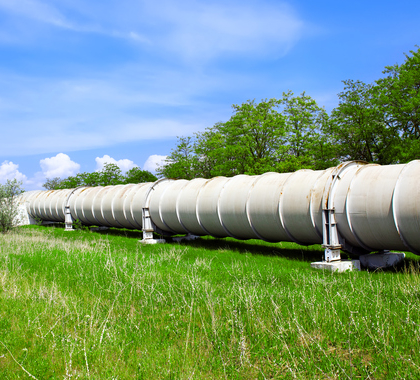A dozen years after it was initially proposed, the Keystone XL Pipeline cleared a major hurdle to its completion as the Nebraska Supreme Court approved its revised path through the state, ending the final Nebraska-based legal challenge to the pipeline.
Upon completion, the $8 billion Keystone XL pipeline is expected to have the capacity to transport more than 800,000 barrels of oil per day from oil fields in northeastern Alberta through eastern Nebraska and on through already completed or previously existing pipelines to refineries on the U.S. Gulf Coast.
Since it was first proposed, environmental groups, some private landowners and Native American groups, and the administration of former President Barack Obama have fought the completion of the pipeline at both the state and federal level. Opponents have fought to deny permits for its construction, refused to sign easements for the pipeline to cross property, engaged in public protests, and brought federal and state lawsuits challenging the project’s environmental assessments, permits granted, and the route chosen.
On August 23, the Nebraska Supreme Court ended another such challenge by ruling the Nebraska Public Service Commission (NPSC) is the agency responsible for determining which pipeline route is in the public interest and the commission did so appropriately after months of careful consideration.
Governor Approved
In 2014, Lancaster County District Judge Stephanie Stacy ruled a state statute allowing then-governor Dave Heineman to approve the pipeline’s path through Nebraska was unconstitutional on the grounds the law had wrongly bypassed the five-member Public Service Commission.
In a back-and-forth in which TC Energy (formerly TransCanada Keystone Pipeline, LP) proposed multiple routes in response to public comments, permitting requirements, and multiple rounds of state reviews of alternative routes, acting under requirements established in the 2011 Major Oil Pipeline Siting Act (MOPSA), NPSC designated the “Mainline Alternative Route” (MAR) as the new approved route through the state in November 2017. The MAR includes a 36-inch-circumference major oil pipeline and related facilities to be constructed through Nebraska, from the South Dakota border in Keya Paha County, Nebraska to Steele City, Nebraska.
Upon de novo review of NPSC’s decision, a review in which the court examined the facts presented to NPSC and ignored all previous legal proceedings and court rulings, the Nebraska Supreme Court found the issues being challenged in the lawsuit should be resolved based on the determination of four overarching questions: Whether the NPSC had jurisdiction to consider TransCanada’s application; whether TransCanada met its burden of proof; whether the NPSC properly considered the MAR; and whether the intervenors were afforded due process.
‘In the Public Interest’
In its ruling, after describing the procedures enacted by the legislature to effectuate proceedings under MOPSA and discussing the administrative history in detail, Nebraska’s Supreme Court ruled NPSC had done its job properly and TransCanada had carried its burden of proving the MAR is in the public interest. As a result, claims raised by the plaintiffs against the route and the procedural steps taken to approve it lacked merit, the court ruled.
“Accordingly, we affirm the NPSC’s determination that approval of the MAR is in the public interest,” the court ruled.
State Governments ‘Biggest Hurdle’
The Nebraska Supreme Court’s ruling is critical to getting the pipeline completed, says Russ Girling, TC Energy’s president and CEO.
“The Supreme Court decision is another important step as we advance towards building this vital energy infrastructure project,” Girling said in a statement issued after the court ruled. “We thank the thousands of government leaders, landowners, labor unions, and other community partners for their continued support through this extensive review process.
“It has been their unwavering support that has advanced this project to where it is today,” Girling said.
Opposition’s ‘Best Shot’
With the Nebraska Supreme Court’s ruling in favor of the pipeline, the most important remaining hurdle preventing completion of the project has now been overcome, says Kenny Stein, director of policy at the Institute for Energy Research.
“This was the environmentalist opposition’s best shot at stopping the Keystone Pipeline,” Stein said. “During the Obama years, the administration itself was the biggest obstacle to construction of the pipeline in the United States.
“Today, the biggest hurdle for TC Energy has been state governments,” Stein said. “The Nebraska decision marks a major step forward for Keystone.”
The next hurdle will come at a scheduled October 9 hearing in Montana in a federal lawsuit filed by the Indigenous Environmental Network and the North Coast Rivers Alliance claiming the Trump administration failed to evaluate the pipeline’s potential impact on nearby waterways properly as required under the 1970 National Environmental Policy Act.
Detailed Plans
Under the plan approved by NPSC and the state Supreme Court, the top of the pipeline will sit a minimum of four feet below the surface of land and at least 25 feet below the surface of any water stream.
Pump stations will be placed an average of 55 miles apart and utilize approximately eight to 10 acres of land but could use up to 17 acres. Shutoff valves will be placed at intervals along the pipeline, based on hydraulics and other factors, and located within 50-by-50-foot fenced enclosures.
Duggan Flanakin ([email protected]) writes from Austin, Texas.




